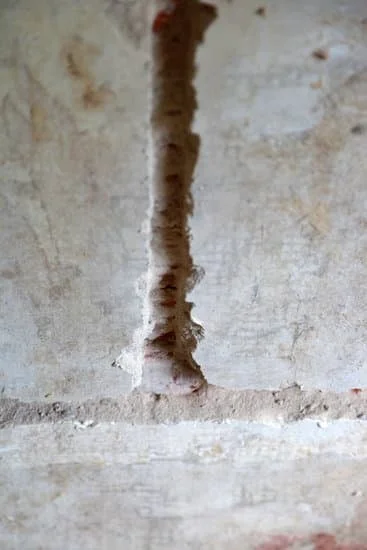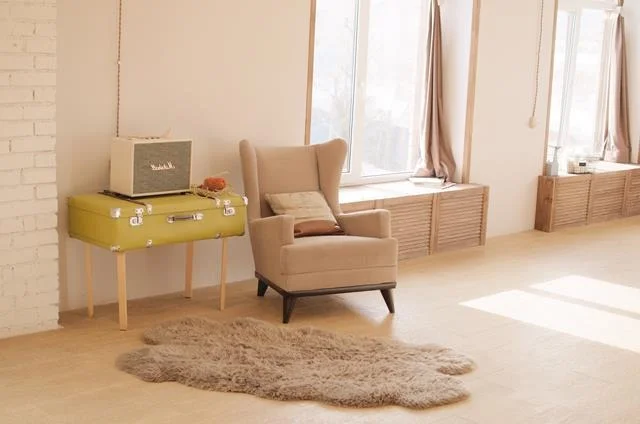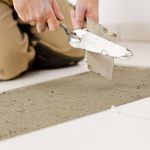What are the interest rates on home improvement loans? Home improvement loans are a popular financing option for homeowners looking to renovate or remodel their homes. In this introductory section, we will discuss the basics of home improvement loans, factors that influence their interest rates, different types of home improvement loans and how to get the best interest rates.
When it comes to home improvement projects, many homeowners often seek financial assistance in the form of home improvement loans. These types of loans can be used to fund a wide range of projects, such as kitchen renovations, bathroom upgrades, or even adding an extension to your home.
One critical aspect to consider when seeking a home improvement loan is the interest rate. Understanding how interest rates are determined and what options are available can help you make informed decisions for your project.
In this article, we will delve into the various factors that influence home improvement loan interest rates. Additionally, we will explore the different types of home improvement loans available and compare interest rates from different lenders and financial institutions.
Understanding these key aspects can help you secure the best financing for your specific needs and budget. So let’s start by gaining a deeper understanding of the basics of home improvement loans and how interest rates play a crucial role in the borrowing process.
Factors That Influence Home Improvement Loan Interest Rates
When applying for a home improvement loan, it is important to understand the various factors that can influence the interest rates you are offered. One of the most significant factors is your credit score. Lenders use your credit score to assess your creditworthiness, and a higher credit score usually results in lower interest rates. Additionally, the amount you borrow, the loan term, and the type of loan you choose can all impact the interest rates on home improvement loans.
The current state of the economy and market conditions can also play a role in determining interest rates. During periods of economic downturn or uncertainty, interest rates may be lower to encourage borrowing and stimulate spending. Conversely, in strong economies, interest rates may be higher as lenders seek to maximize their returns.
Another factor that influences home improvement loan interest rates is the type of lender or financial institution you choose. Banks and credit unions may offer different interest rates compared to online lenders or other non-traditional lending institutions. It is important to shop around and compare offers from multiple sources to ensure you are getting the best possible rate for your home improvement project.
In addition to these factors, the specific details of your home improvement project can also impact the interest rates you receive. For example, using your home as collateral for a secured loan may result in lower interest rates compared to unsecured loans which do not require collateral. Understanding these various factors can help you make informed decisions when seeking a home improvement loan with favorable interest rates.
| Factor | Influence on Interest Rates |
|---|---|
| Credit Score | Higher score usually results in lower rates |
| Economic Conditions | Low during economic downturns; high during strong economies |
| Type of Lender | Lenders offer different rates; shop around for best offer |
Different Types of Home Improvement Loans and Their Interest Rates
When it comes to financing your home improvement project, there are several types of loans available to choose from, each with its own interest rates. One common option is a home equity loan, which typically offers fixed interest rates.
This means that the rate remains consistent throughout the life of the loan, providing borrowers with predictability and stability in their monthly payments. On the other hand, a home equity line of credit (HELOC) often comes with variable interest rates, meaning that the rate can fluctuate over time based on market conditions.
Another popular choice for homeowners is a personal loan for home improvement purposes. Personal loans usually have higher interest rates compared to home equity loans, but they offer more flexibility in terms of usage and eligibility requirements. Additionally, some lenders offer government-backed renovation loans such as FHA 203(k) or Fannie Mae HomeStyle Renovation Loan, which may have competitive interest rates and are designed specifically for home improvement projects.
In order to better understand the different types of home improvement loans and their respective interest rates, it’s important to research and compare offers from various lenders and financial institutions. By shopping around and comparing loan options, borrowers can find the best terms that suit their financial situation and project needs.
| Type of Loan | Interest Rate |
|---|---|
| Home Equity Loan | 4%-6% |
| HELOC | 3%-8% |
| Personal Loan | 5%-12% |
| FHA 203(k) / Fannie Mae HomeStyle Renovation Loan | 3%-7% |
Comparison of Interest Rates From Different Lenders and Financial Institutions
When it comes to financing your home improvement project, one of the most important factors to consider is the interest rate on the loan. Interest rates can vary significantly from lender to lender and financial institution to financial institution, so it’s crucial to shop around and compare your options before making a decision.
Researching Different Lenders
Before you commit to a home improvement loan, take the time to research and gather information from different lenders. This can include traditional banks, credit unions, online lenders, and even specialized home improvement loan providers. Each lender may offer different interest rates, terms, and fees, so obtaining quotes from multiple sources will give you a better understanding of what’s available in the market.
Understanding APR vs. Interest Rates
When comparing loans from different lenders, it’s important to look at the Annual Percentage Rate (APR) rather than just the interest rate. The APR takes into account not only the interest rate but also any additional fees or charges associated with the loan. By focusing on the APR, you can get a more accurate picture of the total cost of borrowing from each lender.
Considering Loan Terms and Options
In addition to comparing interest rates and APRs, it’s also essential to consider the loan terms and options offered by different lenders. Some lenders may have more flexible repayment plans or offer specific benefits for certain types of home improvement projects. By weighing both the interest rate and loan terms offered by each lender, you can make a more informed decision about which option is best for your specific needs.
Negotiating for Lower Interest Rates on Home Improvement Loans
When it comes to obtaining a home improvement loan, one of the key factors to consider is the interest rate. The interest rate on home improvement loans can vary widely depending on several factors, and being able to negotiate for a lower rate can potentially save you thousands of dollars over the life of the loan.
Understanding the Factors That Influence Interest Rates
Several factors can influence the interest rates on home improvement loans. Lenders will typically consider the borrower’s credit score, income, loan amount, and loan term when determining the interest rate. Additionally, current market conditions and overall economic factors can also play a role in setting interest rates. Understanding these factors can help you better negotiate for a lower rate.
Strategies for Negotiating Lower Interest Rates
One way to negotiate for a lower interest rate on a home improvement loan is to shop around and compare offers from different lenders. By getting multiple quotes, you can leverage one offer against another to see if lenders are willing to match or beat competing rates. It’s also important to have a good understanding of your financial situation and creditworthiness before approaching lenders in order to negotiate from a position of strength.
Utilizing Collateral or Co-Signers
If you have valuable assets such as equity in your home or a co-signer with strong credit, this can potentially be used as leverage when negotiating for lower interest rates on home improvement loans. Offering collateral or having a co-signer with strong credit can help mitigate some risk for lenders, making them more likely to offer more favorable terms including lower interest rates.
Understanding the Impact of Credit Score on Home Improvement Loan Interest Rates
When it comes to securing a home improvement loan, one of the most important factors that can influence your interest rates is your credit score. Your credit score is a numerical representation of your creditworthiness, and it plays a crucial role in determining the terms and conditions of your loan. Lenders use your credit score to assess the level of risk they take on by lending you money, which directly impacts the interest rates that they offer.
There are several different types of credit scores, but the most commonly used one is the FICO score. This score ranges from 300 to 850, with higher scores indicating better creditworthiness. Generally, the higher your credit score, the lower the interest rate you’ll be offered on a home improvement loan. Lenders prefer borrowers with higher credit scores because they are viewed as less risky and more likely to repay their loans on time.
Factors such as missed payments, high amounts of debt, and a short credit history can all contribute to a lower credit score. If you have a low credit score, you may still be able to secure a home improvement loan, but you will likely be offered higher interest rates as a result. It’s essential to be aware of how your credit score influences the interest rates you’re eligible for when considering a home improvement loan.
It’s important to note that while your credit score significantly impacts the interest rates on home improvement loans that you’re offered, it’s not the only factor at play. Lenders also consider other aspects of your financial profile when determining interest rates, such as your income, employment history, and debt-to-income ratio. Understanding how all these different elements come together can help you make informed decisions when applying for home improvement loans.
Tips for Getting the Best Interest Rates on Home Improvement Loans
- Shop around and compare offers from different lenders
- Improve your credit score by paying bills on time and reducing existing debt
- Consider secured options such as home equity loans or lines of credit
- Negotiate with lenders for lower interest rates based on your financial stability
Tips for Getting the Best Interest Rates on Home Improvement Loans
When looking to finance a home improvement project, one of the most important factors to consider is the interest rate on the loan. The interest rate will determine the overall cost of borrowing and can significantly impact your monthly payments. To ensure that you get the best possible interest rate on a home improvement loan, consider the following tips:
Improve Your Credit Score
One of the most effective ways to secure a lower interest rate on a home improvement loan is to improve your credit score. Lenders use credit scores to assess the risk of lending money, and a higher credit score often translates to lower interest rates. To improve your credit score, focus on making timely payments, reducing outstanding debts, and avoiding opening new lines of credit.
Shop Around for Lenders
Different lenders and financial institutions may offer varying interest rates on home improvement loans. It’s crucial to shop around and compare offers from multiple lenders to find the best rate available. Consider reaching out to traditional banks, credit unions, online lenders, and specialized home improvement loan providers to explore all options.
Consider Secured Loans
Secured loans, such as home equity loans or home equity lines of credit (HELOC), are typically backed by collateral, such as your home. These types of loans often come with lower interest rates compared to unsecured loans because they pose less risk for lenders. If you have significant equity in your home, exploring secured loan options could result in more favorable interest rates.
By taking proactive steps to improve your credit score, shopping around for lenders, and considering secured loan options, you can increase your chances of securing the best possible interest rates on a home improvement loan. Prioritizing these aspects can lead to significant long-term savings and make your home improvement project more financially feasible.
Potential Risks and Pitfalls of High-Interest Home Improvement Loans
When considering taking out a home improvement loan, it is important to be aware of the potential risks and pitfalls of high-interest loans. High-interest rates on home improvement loans can significantly increase the overall cost of the project and may lead to financial strain in the long run. Before committing to a loan, it’s essential to understand the potential downsides and take steps to mitigate these risks.
One of the main risks of high-interest home improvement loans is the possibility of overextending your finances. With high-interest rates, you may end up paying much more than the original amount borrowed, making it difficult to keep up with monthly payments. This could lead to financial stress and even defaulting on the loan, which could have serious consequences for your credit and overall financial well-being.
Additionally, high-interest home improvement loans can also limit your future borrowing options. If you have a significant amount of debt from a high-interest loan, it may affect your ability to qualify for other types of financing in the future, such as a mortgage or car loan. It’s important to carefully consider how taking out a high-interest loan for your home improvement project may impact your financial flexibility down the line.
Lastly, another pitfall of high-interest home improvement loans is that they can ultimately devalue your home. If the cost of financing ends up being more than the value added by the improvements, you may find yourself in a situation where you owe more than your home is worth.
This can be particularly problematic if you need to sell your home in the future or refinance. It’s crucial to weigh the potential long-term impact on your home’s value before opting for a high-interest loan for renovations.
Given these significant risks and pitfalls, it’s essential for homeowners to carefully assess their options when considering a home improvement loan and evaluate whether they qualify for better terms based on factors such as credit score and alternative types of financing. By understanding these risks and exploring alternatives with lower interest rates or flexible repayment terms, homeowners can make more informed decisions regarding their renovation projects without jeopardizing their financial stability.
Conclusion
In conclusion, when it comes to taking out a home improvement loan, understanding the interest rates is crucial for making informed decisions. Factors such as the type of loan, the lender, credit score, and market conditions all play a significant role in determining the interest rates on home improvement loans. By knowing what influences these rates and how to negotiate for lower ones, homeowners can save money and ensure that their projects are financially feasible.
It’s essential to compare interest rates from different lenders and financial institutions before committing to a home improvement loan. This allows borrowers to find the best possible terms and avoid potential risks associated with high-interest loans. Additionally, being aware of one’s credit score and taking steps to improve it can lead to more favorable interest rates.
Overall, getting the best interest rates on home improvement loans requires thorough research, careful consideration of different loan options, and proactive efforts to improve creditworthiness. By doing so, homeowners can embark on their renovation or remodeling projects with confidence, knowing that they have secured favorable financing for their needs.
Frequently Asked Questions
What Is Interest Rate on Home Improvement Loan?
The interest rate on a home improvement loan can vary depending on factors such as the borrower’s credit score, the loan amount, and the lender’s policies. Generally, these rates can range from around 3% to 18%.
What Is the Average Length of a Home Improvement Loan?
The average length of a home improvement loan is typically between 5 to 20 years. However, some lenders offer shorter-term loans of 2 to 3 years or longer-term loans of up to 30 years, providing flexibility for borrowers.
What Is the Longest Term for a Home Improvement Loan?
The longest term for a home improvement loan is usually around 30 years. This extended term allows borrowers to spread out their payments over a longer period, resulting in lower monthly payments but potentially higher overall interest costs over time.

I’m thrilled to have you here as a part of the Remodeling Top community. This is where my journey as an architect and remodeling enthusiast intersects with your passion for transforming houses into dream homes.





